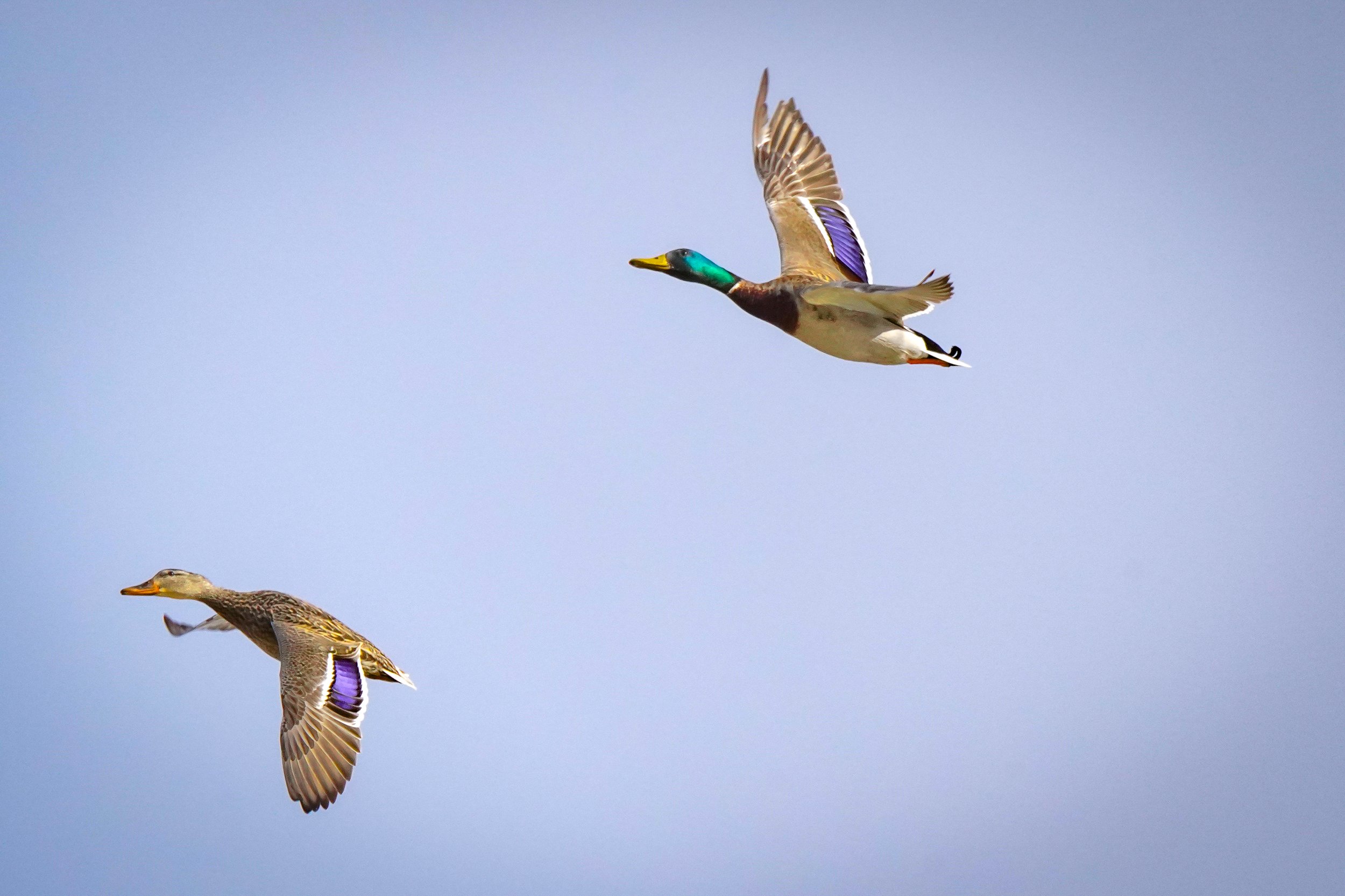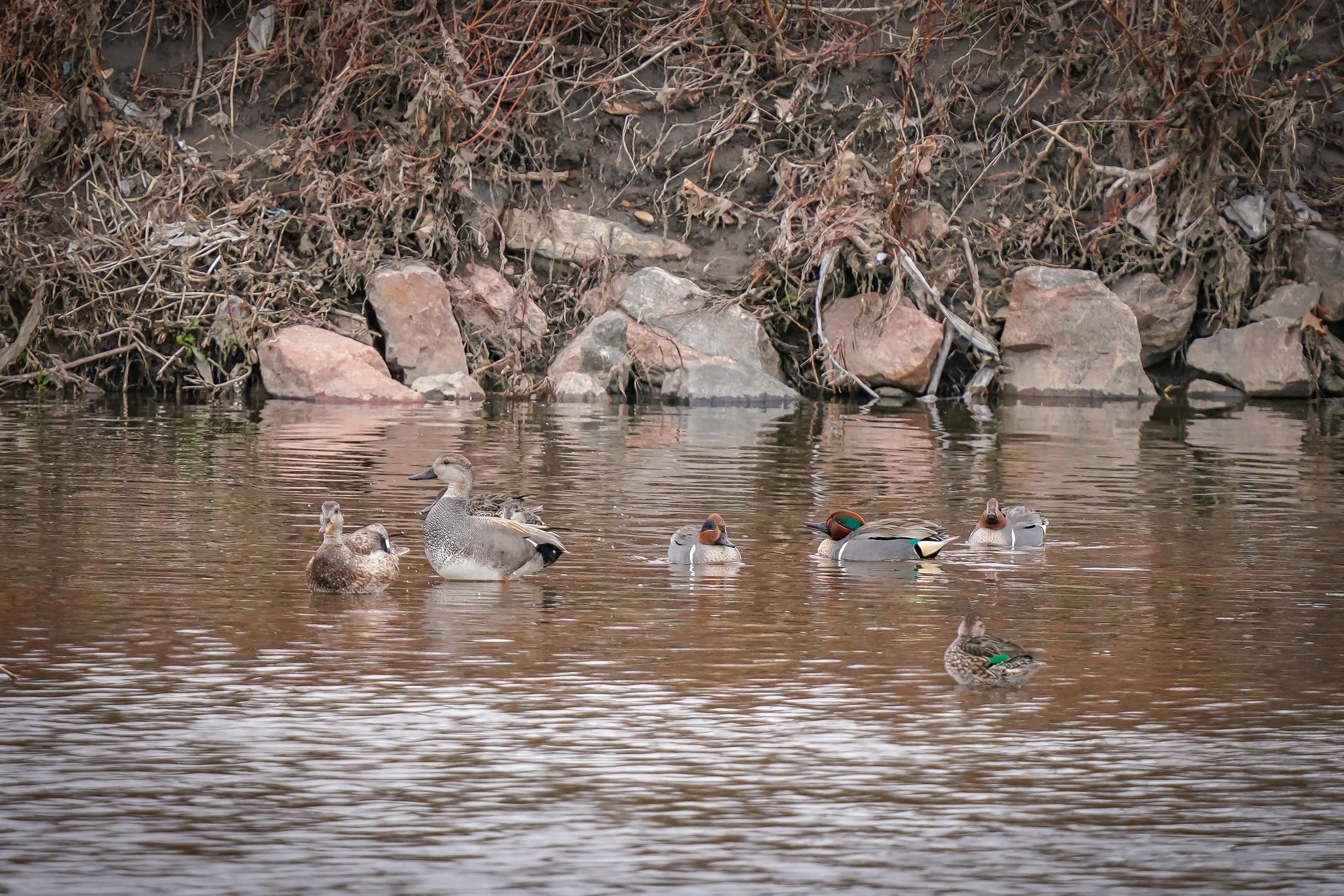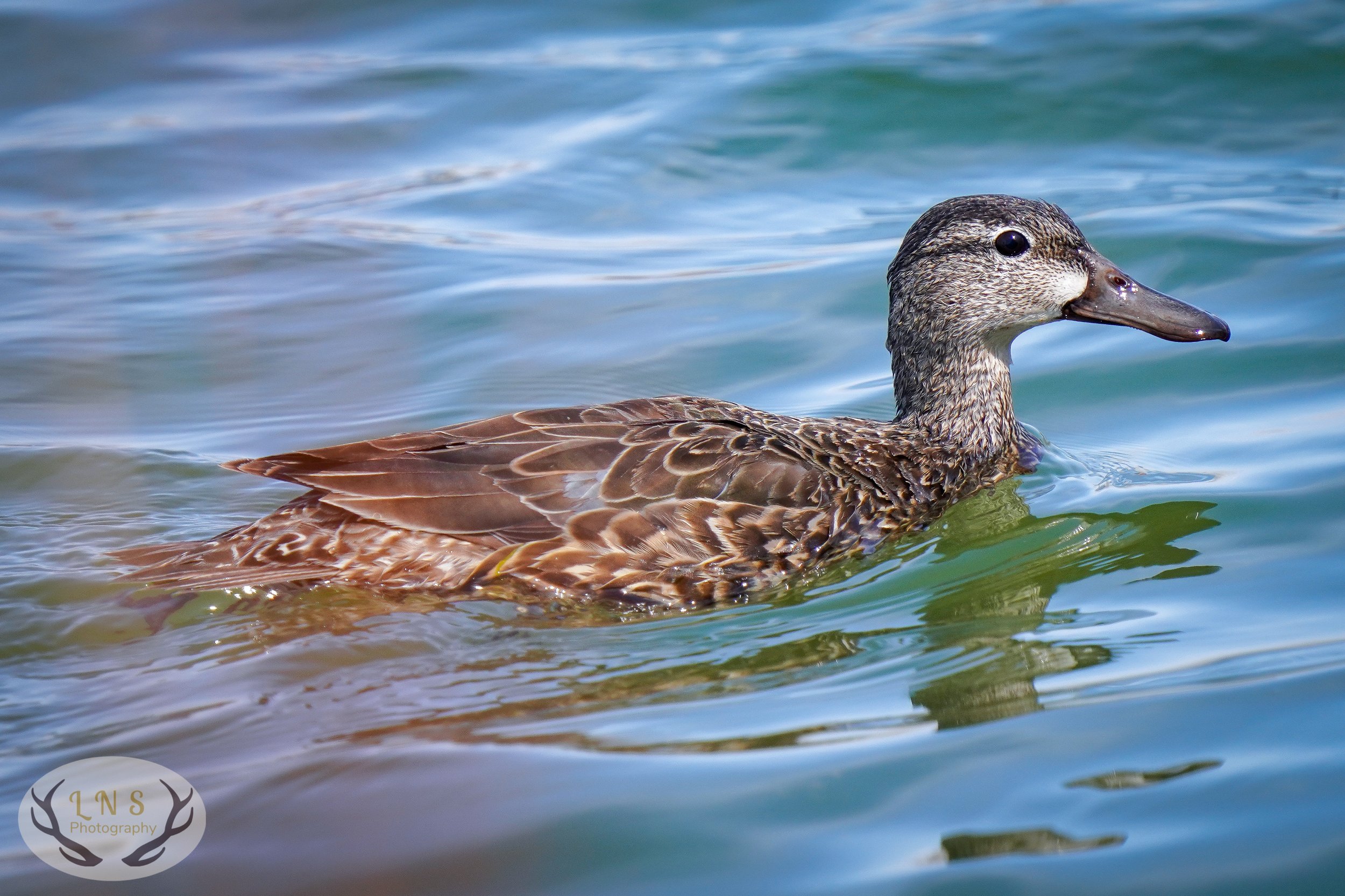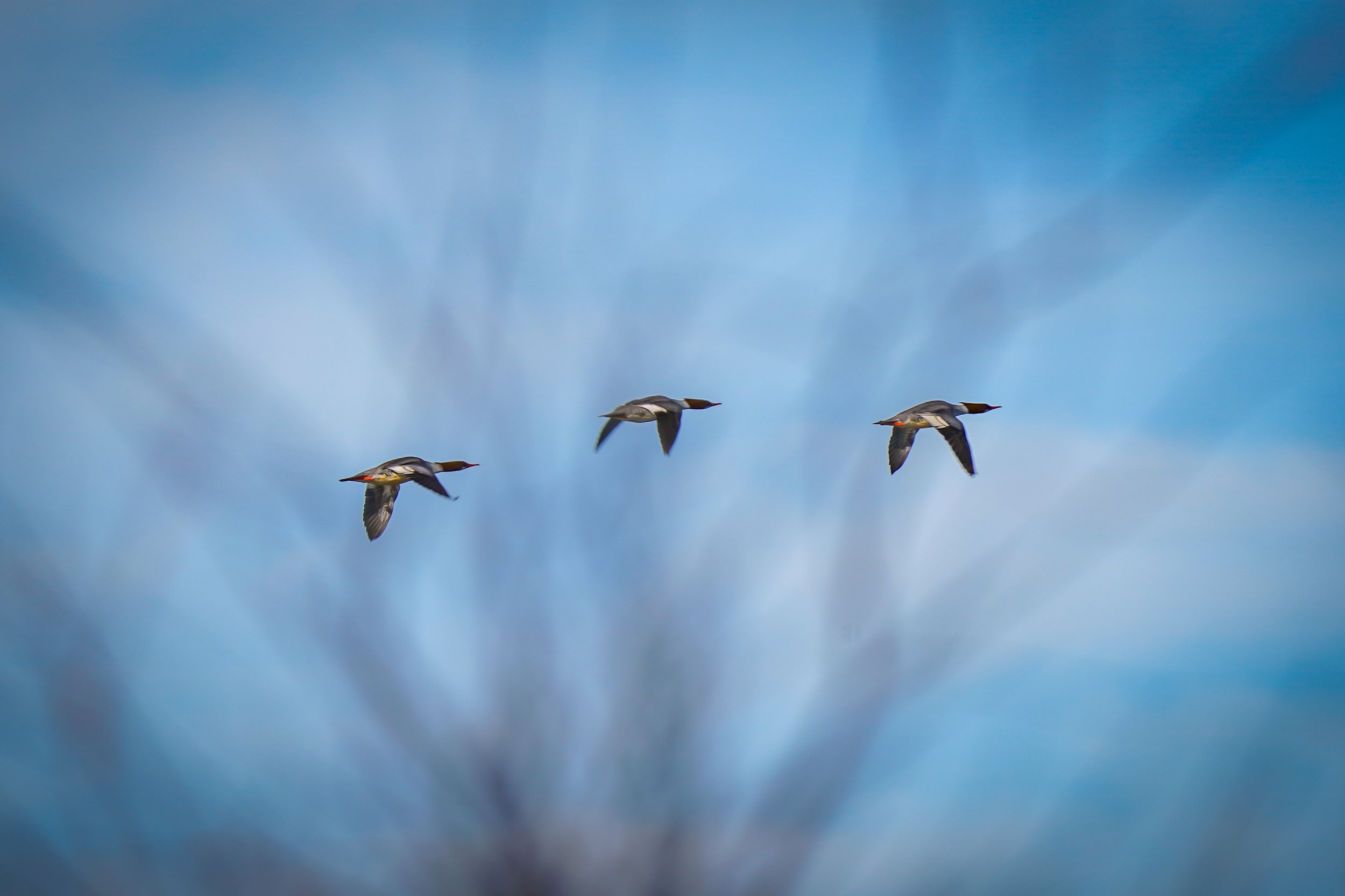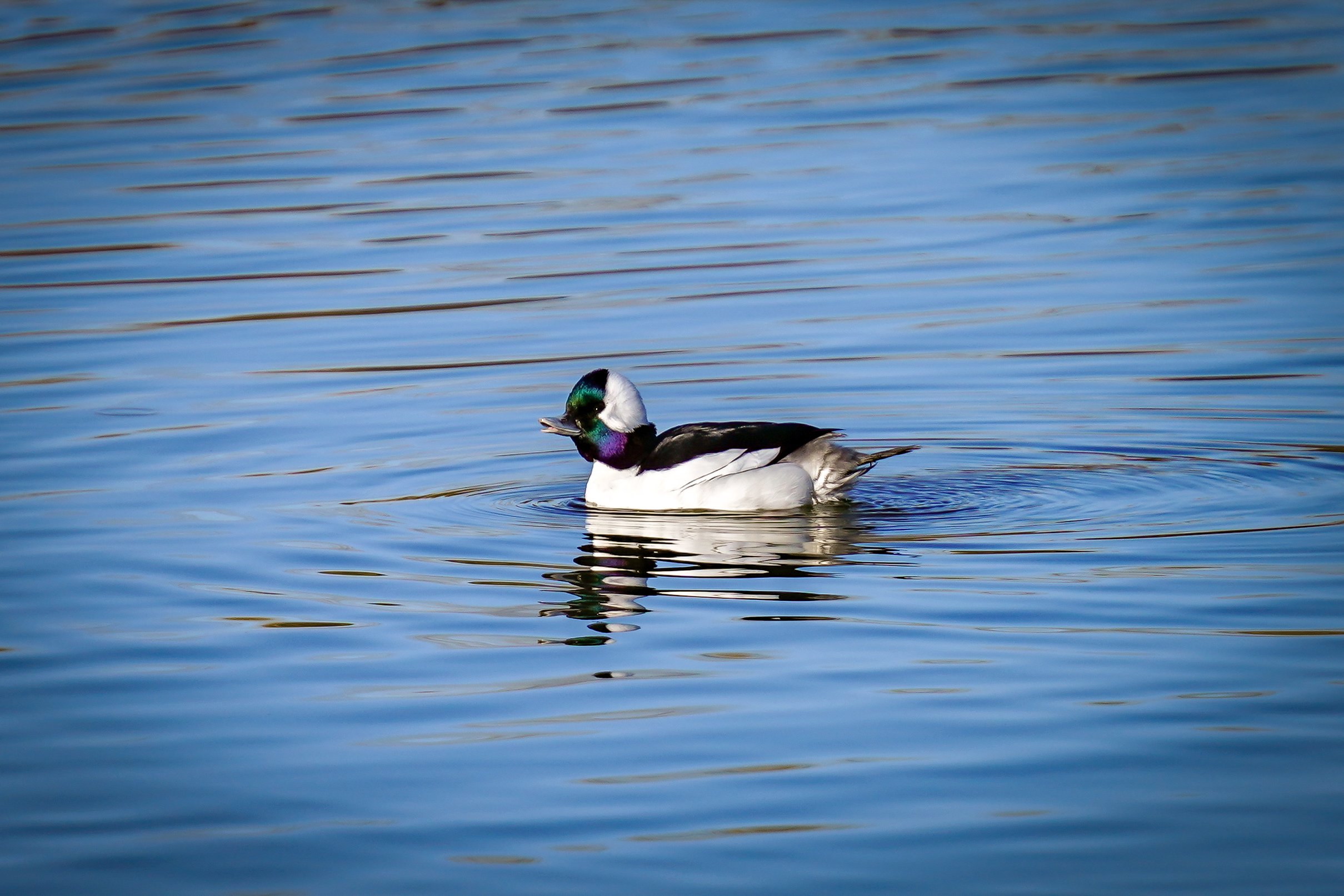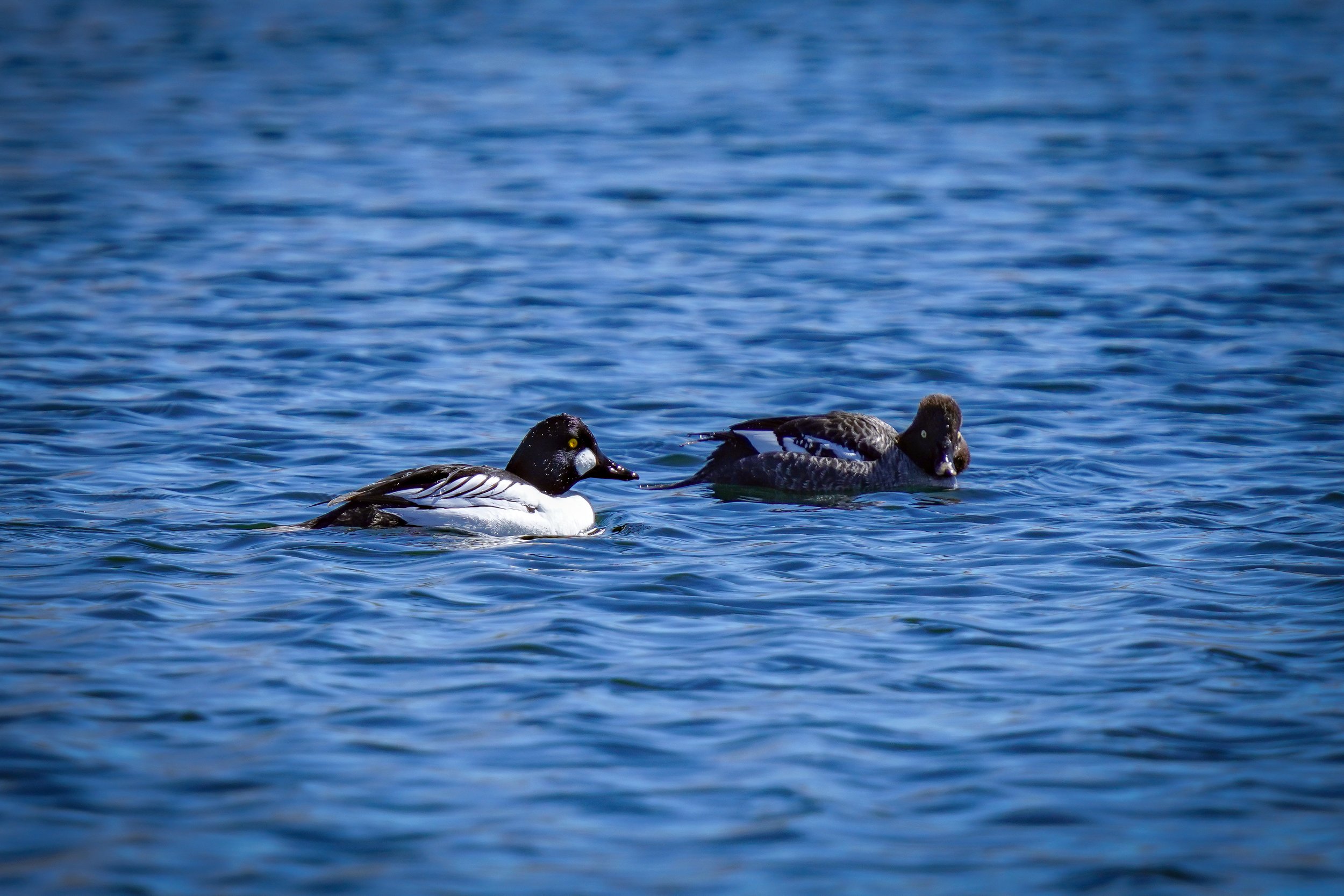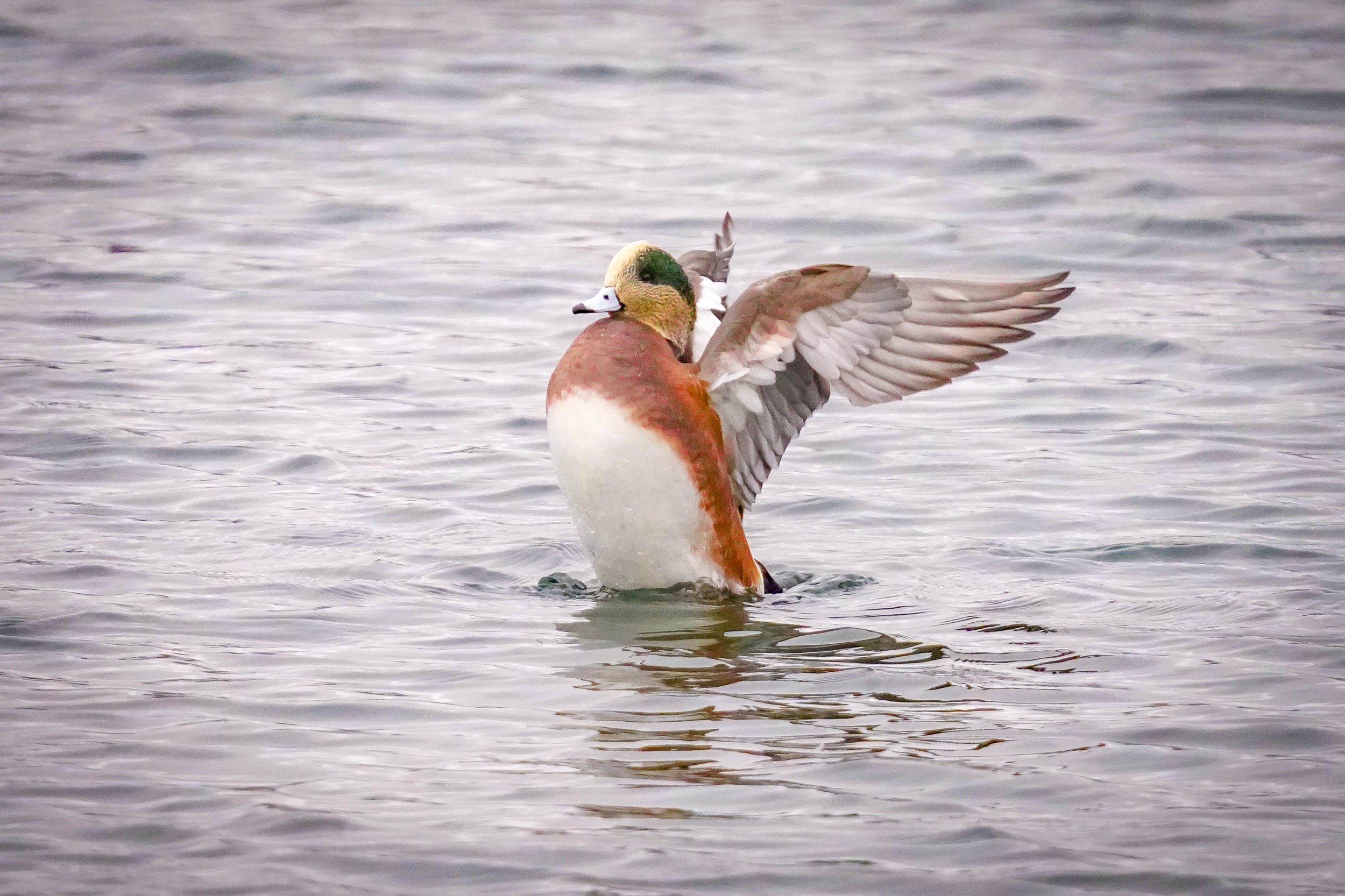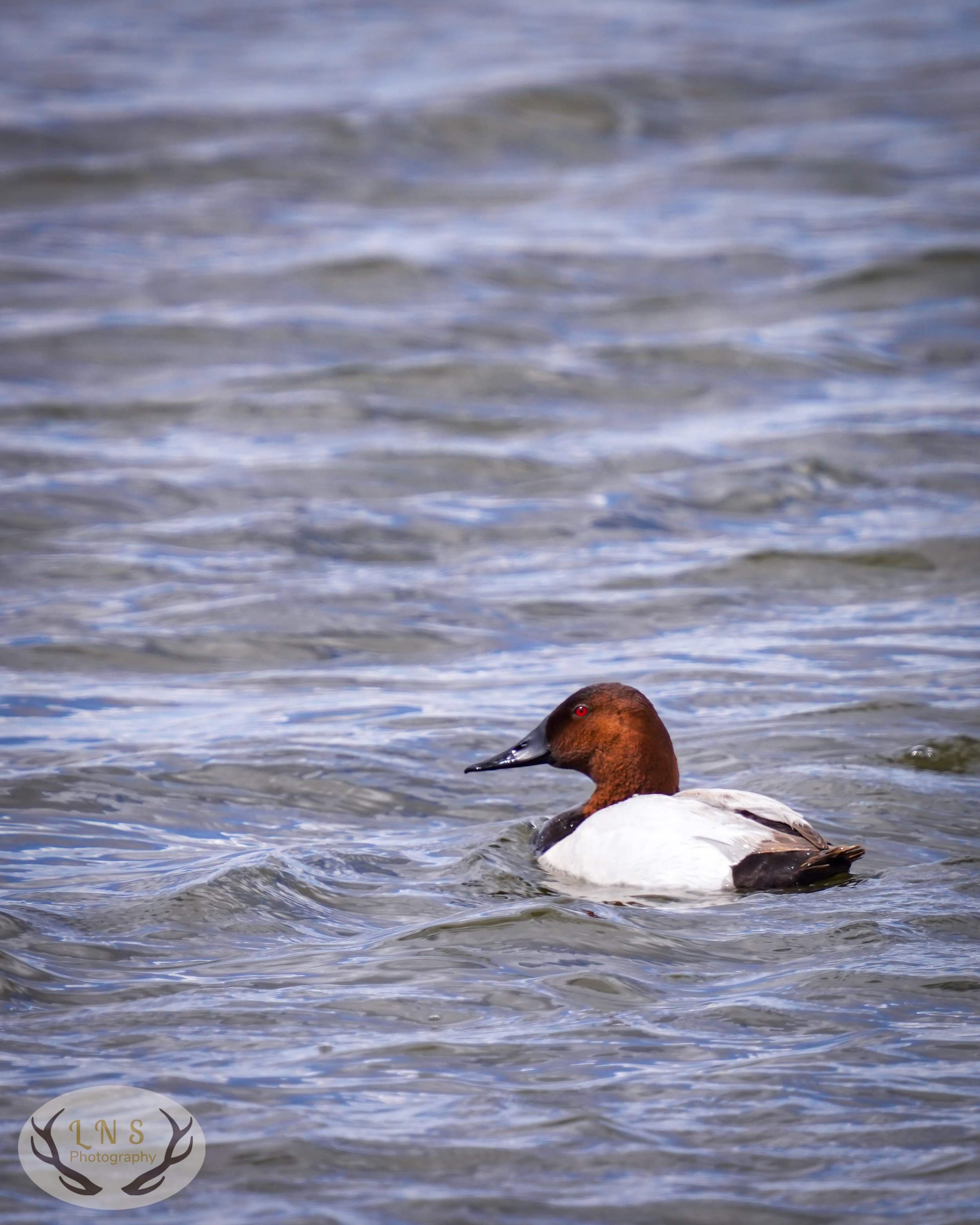What(‘s) The Duck!?
April 15, 2024
Happy Tax Day! If taxes have you saying “What The Duck” then this particular blog is for you!
Since my first “Wednesday Walk” on March 6, I’ve seen ducks at every walk I’ve done. And although they seem common, there’s such a variety among ducks that I thought I’d deep dive a bit more into them!
First, you should know that there are 2 common categories for ducks - Dabblers and Divers. There is also a third category - Perching Ducks - but it does not encompass very many species in North America.
Your dabbling ducks are those that tend to stick their butts up in the air and forage under the surface of the water. The diving ducks do just that, and primarily dive for fish and other aquatic species. Most ducks are omnivorous, but some are specialists. Mergansers are a group of ducks that particularly like eating fish, so they are considered specialists.
One of the most commonly known ducks is the Mallard. All domestic ducks are descended from Mallards or Muscovy ducks. Mallards typically have a clutch of five to 14 eggs and babies head to the water almost immediately after hatching! Mallards are especially prone to hybridization and you may see Mallard mash-ups at your local park. Please enjoy a few recent Mallard images below:
Additional common ducks to see in Colorado in the springtime include the “Teal” ducks - Cinnamon Teal, Green-Winged Teal, and the Blue-Winged Teal. These ducks belong to a grouping that includes a total of 15 duck species worldwide. These ducks are considered dabblers and are usually met with “oohs & aahs” when seen, since they are especially beautiful! Please enjoy a gallery of Teals below:
The Teals are quite beautiful, but some other “ducks” that are fun to see include the Mergansers! We have Hooded, Common, and Red-Breasted Mergansers in North America. I have not been able to see a Red-Breasted Merganser in the wild yet, but I have seen plenty of the other two and they are quite striking. Please enjoy a few images of them below:
Mergansers are pretty cool to watch diving for fish and sometimes competing with other divers (Double-Crested Cormorants for one) and bigger birds (like American White Pelicans) for their fish food. My “Wednesday Walk” this week is to Golden Ponds, where last year I captured the image of the pelican, cormorant, and merganser all fishing together. It was really fun to watch the antics and capture the action! You can join me this week, by signing up here.
Now let’s take a look at some of our more unique looking ducks! These include the Buffleheads, Lesser Scaups, Common Goldeneyes, Ring-Necked, American Wigeon, Northern Pintail, Northern Shoveler, Ruddy, Canvasback, and Wood ducks! While all of these ducks differ greatly, they do have commonality in being exciting to see due to their unique coloring, feather patterns, and behaviors. See the gallery below and click on the pictures for additional information:
As you can see, there is a wide variety in how ducks look! There are also many more ducks we see in North America, I just don’t have great photos of some of the other ones. The ones I would like to get a better look at would be Redheads, Harlequin Ducks, Long-tailed Ducks, and Eiders!
And last, but certainly not least, for this installment of “What(‘s) The Duck”, we have our somewhat plain & common looking Gadwall duck! These large ducks are actually quite beautiful in their simplicity. Their feather details are exquisite, and they do serve an important purpose! A couple fun facts about Gadwall ducks- they will sometimes steal food from other ducks, females will lay 1 egg per day, usually with 7 to 12 in a clutch per breeding season, and the oldest living wild Gadwall recorded was a male that was over 19 years old!
I hope you learned a little about ducks in this installment of “What(‘s) The Duck!?” Hopefully your taxes are done too ;-)
If you have questions about any of the ducks seen here, or would like to join me to learn more about and see ducks, send me a message!



